|
A Comparative Study of Neural Networks and
Logistic Regression for High Energy Physics
Spring 2017
Elizabeth City State University
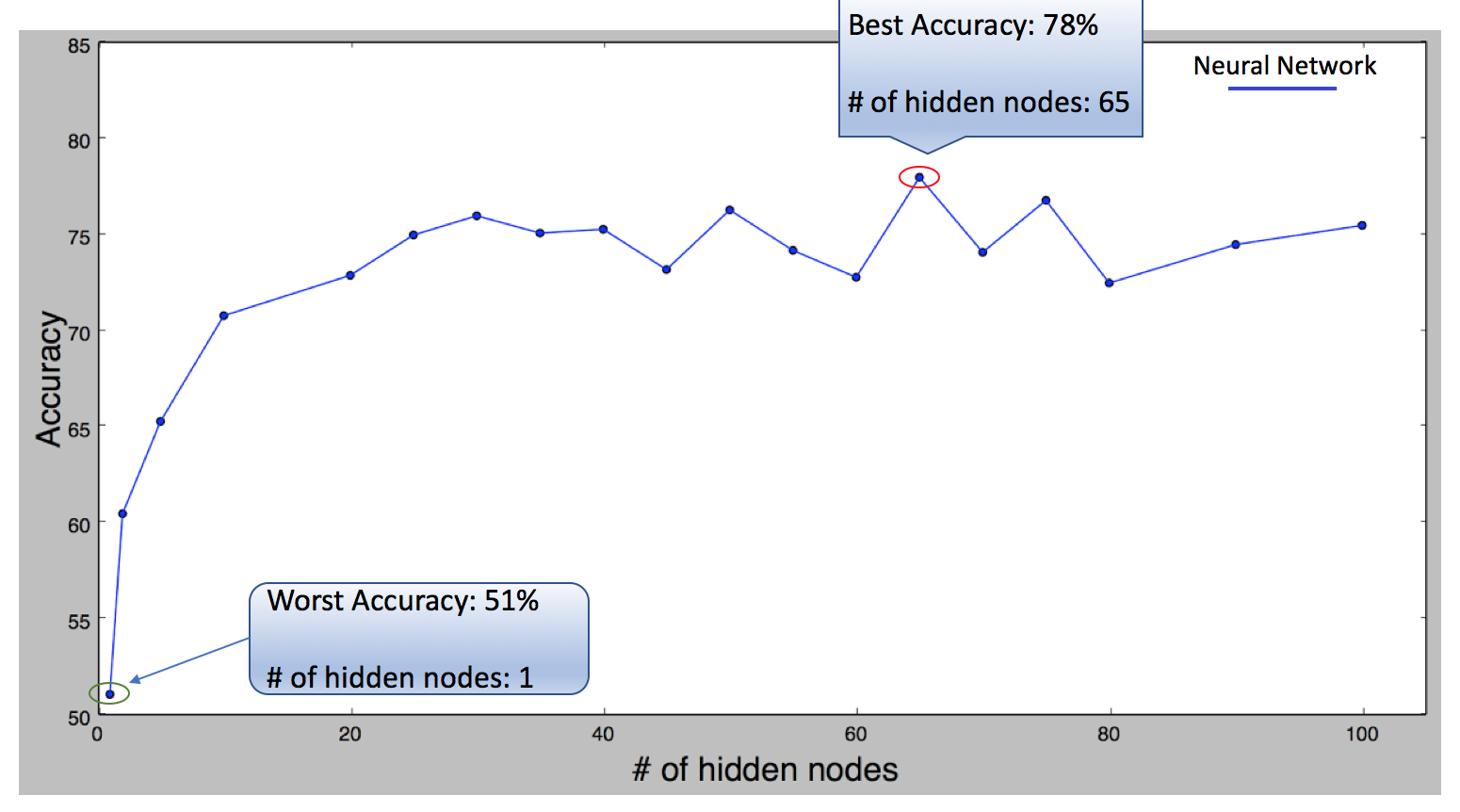
Keywords: Neural Networks, High Energy Physics, Logistic
Regression
Mentor: Jerome E. Mitchell
Abstract:
Neural networks are programs that run based on
machine learning algorithms and resources to mirror the function
of the brain in its roughest capacity. Neural networks are
used primarily for the management and manipulation of large
quantities data to form classifications, more efficient searches, and
prediction of the data. Neural networks exist as part of the larger
field of machine learning that exists. Linear regression in turn
serves as the statistics based solution to the classification issue,
an alternative to neural networks that are also a form of machine
learning. The focus of this research was to observe whether
neural networks or linear regression models are more effective
for classification of a supersymmetry dataset. The supersymmetry
dataset is made up of the results gathered particle collision events
within a particle accelerator. Supersymmetry itself is a theory
within particle physics that suggests the particles that are absent
in the standard model are symmetric, or balancing, counterparts
to the particles that have been already discovered.
image is given.
URL: http://nia.ecsu.edu/ur/1617/teams/neural/
Counting Faces: Computer Vision and Privacy Application for the Visually Impaired Person
Summer 2016
Indiana University Bloomington
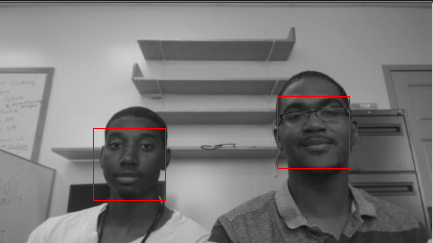
Keywords: visually impaired person, Beaglebone Black, infrared camera
Mentors: Dr. Apu Kapadia, Rakibul Hasan, Patrick Shaffer
Project Summary:
The
team developed a system that will inform a visually impaired person how
many people are around them utilizing a Beaglebone Black. Our system
uses an infrared camera to detect the presence of an individual based
on body temperature and an HD camera to capture an image. The image is
then processed and an output of the number of faces in the captured
image is given.
URL: http://nia.ecsu.edu/reuomps2016/teams-iu.html
Producing 3D point cloud and digital
elevation models through the use of Unmanned Aerial Vehicles, Historic
St. Luke’s Church case study
Spring 2016
Elizabeth City State University
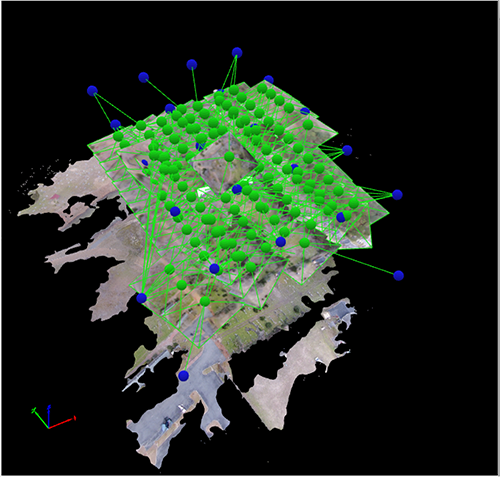
Keywords: archaeology, aerial imagery, DJI Phantom 2 Vision+, drone, U.A.V.
Mentors: Mr. Clay Swindell
Abstract:
This research project was initiated to demonstrate
the ability of Unmanned Aerial Vehicles (UAV) to gather elevation and
3D data using only a visible light camera. The chosen test case was the
structure and property associated with Historic St. Luke’s Church. This
historic property represents Virginia’s oldest standing church built in
the late 17th century. While the property area associated with the
church covers several acres, The UAV team chose to focus on the
historic structure and immediate surrounding area. The intention was to
fly a DJI Phantom 2 Vision+ UAV along a gridded flight plan designed to
capture an array of images at defined intervals. These images were
subsequently processed with the Pix4d software to produce an image
mosaic of the gridded area, a 3d point cloud and digital elevation
model (DEM), and finally a 3D model of the historic structure. The
dataset will expand on the historical and the geographic placement of
the structure and will assist Historic St. Luke's in directing future
archaeological and landscape studies on the property.
URL: http://nia.ecsu.edu/ur/1516/teams/uav/index.html
Software Testing at UNT
Summer 2015
University of North Texas

Keywords:
Mentors: Dr. Renee Bryce and Mr. Ryan Michaels
Abstract:
As technology continues to progress and become a more integral part of everyday life, the need for efficient and reliable testing services likewise continues to grow. This
is especially true in mobile testing, where there is both incredible
device diversity and a low barrier for entry into the realm of
application creation. Most current mobile research has focused on
either addressing concern over applications functioning over a wide
range of devices, or proof of concept test generation on no more than a
handful of applications, and typically cannot be generalized to a wider
application pool. This summer we have focused on addressing that second
issue, by developing a tool for test case generation of android
applications regardless of android version and emulator type.
Additionally, the team explored the breadth of the software testing
process, from application discovery, test case generation, replaying of
test cases against bugged versions of the application, and finally
exploring questions of test case analysis, specifically looking at
(GUI) element coverage.
URL: http://nia.ecsu.edu/ur/1516/summerinterns/15internships.html
Documentation of the Installition of Terascan
Spring 2015
Elizabeth City State University
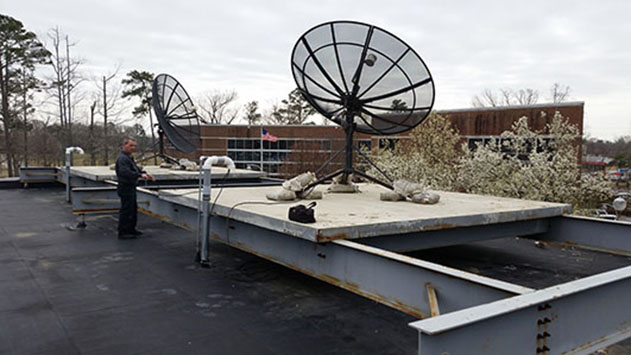
Keywords: SeaSpace, TREX, TeraScan, CentOS, Visualization Stations, TeraVault, Monitoring Systems, GOES
Mentors: Mr. Michael Osterhouse & Mr. Andrew Brumfield
Abstract:
In
September 2014, a transition was made to a direct purchase and
installation of Seaspace hardware and software. The installation of the
Seaspace hardware included: 15 Visualization stations, 2 monitoring
systems, a Teravault raw storage device, and a TeraScan Rapid
Environmental X-treme (TREX) high-powered processor. The installation
of the Seaspace software on the 15 Visualization stations included: an
updated version of TeraScan, which includes the Graphical User
Interfaces TeraVision and TeraMaster, and CentOs, which is a
Linux-based Operating System. Also two 5.0m L band systems were
installed on Dixon-Patterson hall in the summer of 2012. The purpose of
this project was to document the installation requirements and internal
processes at ECSU for Seaspace Hardware and Software Equipment, with
also addressing; the location of engineering findings, location of
installation requirements, repositioning and securing current ground
stations, and proper training center needs.
URL: http://nia.ecsu.edu/ur/1415/teams/terascan/Homepage.html
Evaluating the Performance of MPI Java in FutureGrid.
Summer 2014
Indiana University Bloomington

Keywords: MPI, HPC, OpenMPI, FastMPJ, Benchmark
Mentors: Dr. Geoffrey Fox & Mr. Saliya Ekanyanke
Abstract:
Message
Passage Interface (MPI) has been popular in developing tightly coupled
parallel applications in the high performance computing (HPC) domain.
The majority of such applications are based on either C, C++ or
Fortran. The recent advancement in big data, however, has brought
attention towards Java. Effort has also been put on Java's support for
HPC with flavors of MPI such as OpenMPI Java and FastMPJ. We evaluate
these against native C based MPI on a set of standard micro-benchmarks
from Ohio State University. The results show a promising future with
Java and MPI for HPC applications.
URL: https://github.com/cloudmesh/reu/blob/master/doc/source/projects/mpi-java-performance.rst
Customizing and Configuring the HUBzero Experience
Spring 2014
Elizabeth City State Univerisity
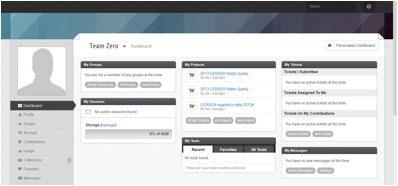
Mentors: Mr. Justin Deloatch, Mr. Je'aime Powell
Abstract:
HUBzero
is an open source software package used to construct websites for
scientific research and educational activities. HUBzero was originally
created by researchers at Purdue University in conjunction with the
National Science Foundation (NSF) who sponsored the Network for
Computational Nanotechnology to support nanoHUB.org. The HUBzero
platform currently supports over 40 hubs across a variety of
disciplines, including cancer research, biofuels, climate modeling,
water quality, education, and more.
The team investigated how
HUBzero features are utilized for research, education, and scientific
collaboration. The project involved configuring and customizing the
user experience on a new hub. The team also learned how to work with
simulation workspaces, plus the process of allowing groups to
collaborate. Finally, the team learned how to publish the hub so that
it could be viewed publicly and how to use the new database component.
To accomplish this, the HUBzero team members used data collected by the
2013 Research Experience for Undergraduates Pasquotank River Watershed
Team who completed tests of five tributaries and the river itself.
Streams tested were Newbegun Creek, Knobbs Creek, Areneuse Creek, Mill
Dam Creek, and Sawyers Creek. The team uploaded test data to a database
to determine how HUBzero handles databases.
URL: http://nia.ecsu.edu/ur/1314/teams/hubzero/
|
